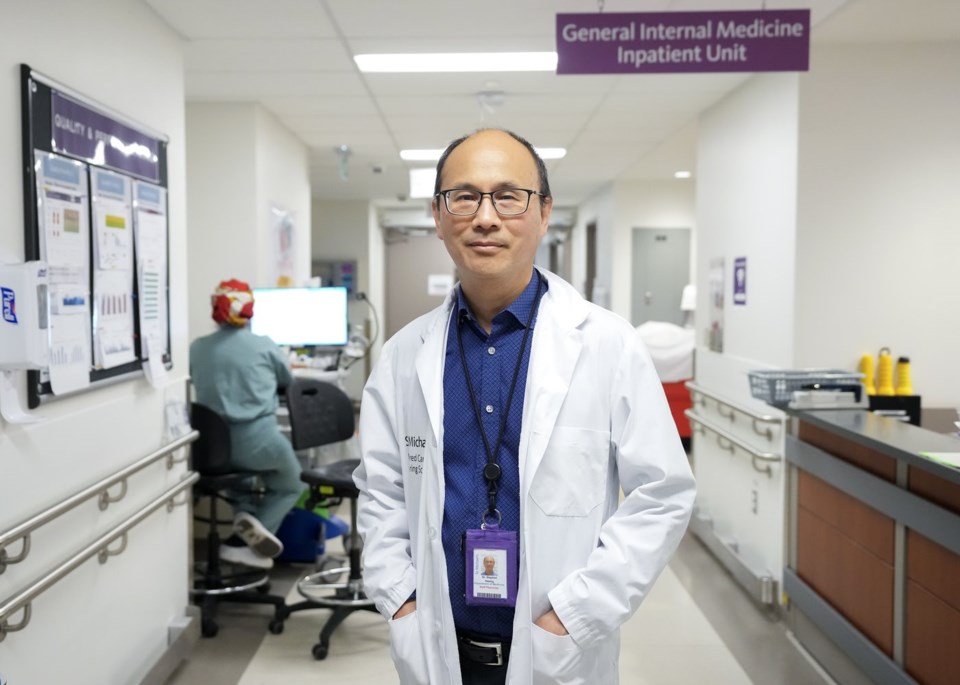TORONTO — April Aleman tracks the Uber she ordered for her 82-year-old client as it makes its way to a public health building on a quiet street tucked away from the bustle of downtown Toronto.
When the vehicle arrives, Aleman unpacks a walker from the trunk and greets the woman with a warm familiarity. She slows her pace to match her client's as they make their way into the clinic and approach the front desk.
“Hello, we have a dentist appointment,” Aleman tells the receptionist while helping the woman rummage through her purse to find a health card.
They sit side-by-side on plastic chairs in a near-empty waiting room, leaning towards each other to complete paperwork on a clipboard.
“Do you have an emergency contact you want to put down?” Aleman, a homeless outreach counsellor at St. Michael's Hospital, asks, pen in hand.
“No, just you people,” her client quips, and they both laugh.
Aleman works at the Navigator Program, which helps steer unhoused people through a health-care system that can be especially challenging for patients without a fixed address or means to advocate for themselves. The program was established to break the cycle of hospital readmission and improve health outcomes.
Aleman's client said she was admitted to St. Mike’s with COVID-19 in late December. When it was time for her discharge on Christmas Day, she was homeless for the first time in her life. She said a family member she was living with had kicked her out of the house.
The navigators took over her case and found her a shelter bed.
"I hate to even think about it," she said of what would have happened if Navigator hadn't intervened and she walked out into the bitter cold with nowhere to go.
In late January, Aleman helped her secure an apartment in a Toronto Community Housing senior's building.
"Everything I've been through...they've been there," said the woman, whom the hospital asked not to be named to respect the privacy of patient health information.
Once their hospital treatment ends, patients without housing are discharged back onto the streets, often without a phone, family doctor, health card or shelter. Many return to hospital with worsened health conditions and the cycle continues.
Navigator started at Toronto's St. Michael's Hospital in 2019, and expanded to Vancouver's St. Paul’s Hospital in 2023, collectively serving more than 1,000 patients since then.
One of the first clients from the Vancouver hospital was a woman who landed in the emergency department about 26 times in two months.
"Then I started working with her," said Alex MacKinnon, an outreach navigator at St. Paul's.
MacKinnon said she helped the patient find housing and saw concrete change, despite the ongoing management of chronic illnesses.
"Having checked back in on her ED rates, they went down significantly,” she said.
Dr. Stephen Hwang created the program at St. Mike's after examining readmission rates among homeless patients admitted to internal medicine between November 2017 and 2018. He found that 27 per cent of 129 patients returned within 90 days. Roughly a third of participants were readmitted for an identical diagnosis as their initial admission.
It's like having a "super advocate," said Hwang.
A randomized controlled trial is underway to establish whether the program cuts down on return hospital visits. The trial, funded by a Canadian Institutes of Health Research foundation grant, involves 656 people experiencing homelessness.
Hwang said there are already striking indicators that the approach works, such as the fact 67 per cent of Navigator patients who needed a family doctor obtained one through the program.
Navigator has three outreach workers at St. Mike's and one at St. Paul's, including Aleman in Toronto and MacKinnon in Vancouver. On average, they each see 15 patients at a time for about 90 days. In Toronto it's funded by St. Michael's Hospital Foundation while the Vancouver pilot is funded by Staples Canada.
Navigators bring patients coffee, toothbrushes and fresh socks when they're admitted to hospital.
These small acts helps build strong relationships between outreach counsellors and their clients, said Dr. Anita Palepu, an internal medicine physician at St. Paul’s.
"It's not just a physical poverty. In some cases, it's also deep social poverty and isolation," said Palepu.
The hope is that after three months patients stand on more stable ground with a roof over their head, a family doctor and government benefits. Though the Navigator office door always stays open.
One morning in late May, Fred Ellerington, another Toronto navigator, was alerted that one of his patients was in the emergency department. Right away, one of his colleagues left their shared office on the general internal medicine floor to check on them.
"We're embedded," Ellerington said of the immediate access hospital-based navigators have to patients and their electronic medical records.
Ellerington said the patient had cleared standard health tests but his colleague could tell something was off because the patient's behaviour was odd compared to a visit a week earlier. Ellerington said they encouraged a closer look, suspecting a neurological problem
"They just don't have that relationship with the patient," Ellerington said.
While the program's primary goal is improving health outcomes, Ellerington said cutting return visits can also save money and hospital beds.
Hwang said he is working to launch the program at the University of Montreal Hospital Centre later this year and wants to see it in more hospitals across the country.
Long-term, he said he wants policies and programs to address the root causes of homelessness, including making housing and mental health supports more affordable.
"But in the meantime, it's just really important that we serve the people who are right before us in our midst, who have urgent, severe health problems, and who end up literally on the doorstep of the hospital."
This report by The Canadian Press was first published July 1, 2025.
Canadian Press health coverage receives support through a partnership with the Canadian Medical Association. CP is solely responsible for this content.
Hannah Alberga, The Canadian Press



